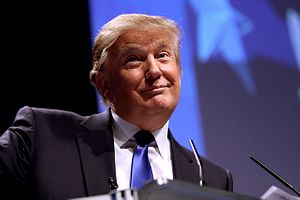Quite apart from the Trump-Xi summit, China and the United States are due for a showdown in the South China Sea. Beijing confronted the last two administrations with dangerous naval encounters designed to mark territorial claims and probe Washington’s political will. For George W. Bush, it was the Hainan Island Incident on April 1, 2001. For Barack Obama, it was the USNS Impeccable on March 9, 2009.
This history suggests that China should challenge U.S. military presence in the coming weeks.
Yet President Donald Trump is in his third month in office and still largely untested by Chinese leaders, who are using the Mar-a-Lago summit as a prime opportunity to size up the new American administration.
The atmosphere emerging from the April Trump-Xi summit could be an important clue as to whether Chinese leadership will risk a major power clash during a critical year in which domestic politics are focused on the 19th National Congress of the Communist Party. Even if Xi returns to Beijing with grave doubts about cooperating with the United States, there are short-term tactical reasons not to rush into a confrontation at a time when Xi believes current regional trends are in its favor.
This wait-and-see approach explains China’s recent emphasis on soft power politics. After all, Xi has extolled the virtues of global trade and made vague promises of prosperity that would follow his “One Belt, One Road” initiative to paint China as the new driver of global growth. If the United States fails to mount an adequate response, it risks ceding the future of the Asia-Pacific solely to China.
Yet there is a way forward for the young Trump administration. To reclaim U.S. leadership in the Asia-Pacific, the Trump administration must mobilize around a coherent strategy that preserves U.S. influence, maintains assured access, and avoids a costly conflict.
To do this, the Trump administration must first formulate and articulate its vision for Asia to both its partners in the region and Beijing. The Trump-Xi summit comes too early for the United States to articulate an Asia strategy based on the idea of “America First,” economic nationalism, and peace through strength. But there are future opportunities on the high-level diplomatic calendar, including the ASEAN summit later this month, in which the United States can set and sustain a strong tone. A muscular diplomatic front with consistent messaging is the first step for reasserting U.S. leadership in the region.
Secondly, the Trump administration must look to intensify trade negotiations in Asia and slow down the region’s overall reliance on Beijing. Although the multilateral Trans-Pacific Partnership (TPP) appears moribund, the United States should use its demise as the basis for a series of new bilateral agreements, starting with TPP member-state Vietnam, to reap the benefits of a rapidly growing region. In addition, the United States must sustain current global norms like freedom of the seas for maritime states like the Philippines. Even if President Rodrigo Duterte seeks to resolve maritime territorial disputes bilaterally with Beijing (and there are signs that he is waking up to the need to deter Chinese adventurism), clear backing from the United States would shore up Manila’s bargaining position. Yet, the impetus for this push cannot only be to do Manila a favor, but rather to provide a counterweight to the meticulous Chinese erosion of the rule of law. As a seapower nation, the United States must preserve assured access to the global commons — both commercially and militarily.
Lastly, the United States must shift its strategic focus in Asia from spectacle to function. Although freedom of navigation operations (FONOPs) and joint military exercises provide outstanding set-piece demonstrations, what is needed most is a strong, mobile, and sustained presence. The United States should expand cooperation with allies like Japan and Australia, while also forging meaningful defense ties with receptive countries like India and Indonesia. The most efficient way to achieve Trump’s peace through strength agenda would be through a flexible security network, one that serves as a greater naval, air, missile, cyber, and coast guard deterrent against Chinese-sponsored aggression and remains committed to enforcing a common set of rules.
Responding to a coming conflict in the South China Sea requires planning for the long haul. Without a strategy to address Chinese encroachment, the United States risks perpetuating a cycle of reactive, crisis management policies that puts it at a constant disadvantage. If the United States is to take the initiative again in the Asia-Pacific, Washington must move swiftly to formulate a coherent long-term strategy that informs its responses to Chinese probing and not the other way around.
Patrick M. Cronin and Anthony Cho work at the bipartisan Center for a New American Security and are the authors of the forthcoming policy brief, Averting Disengagement: A Geoeconomic Strategy for the Trump Administration in Southeast Asia.

































